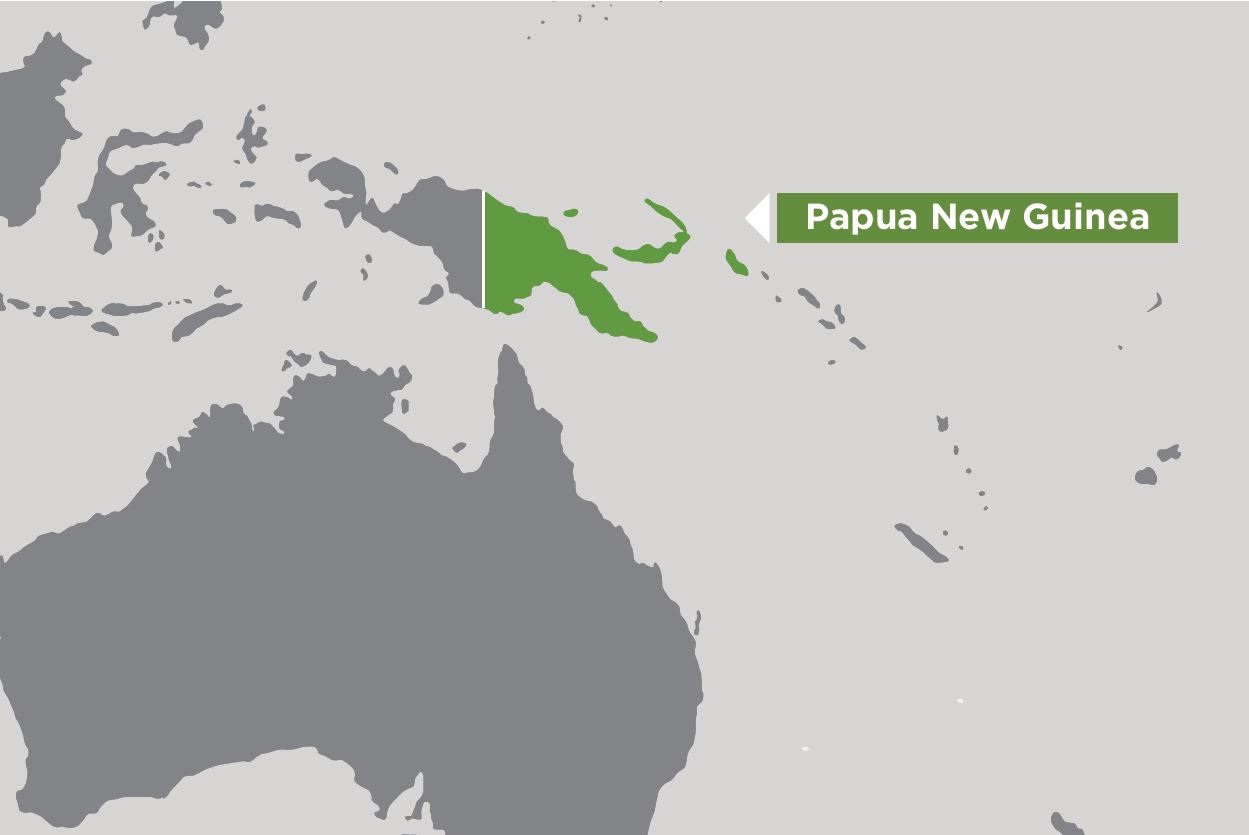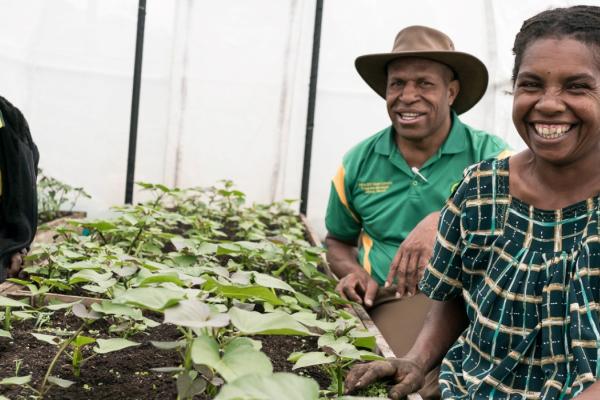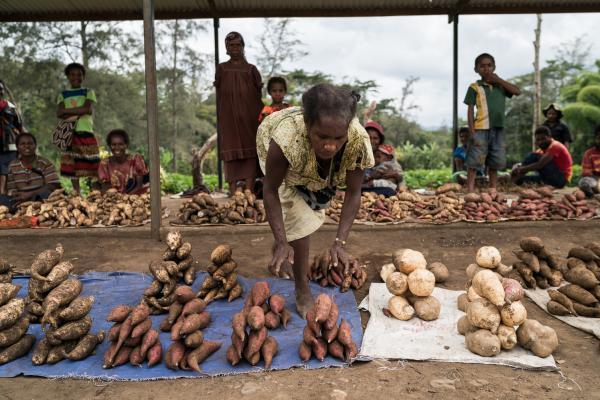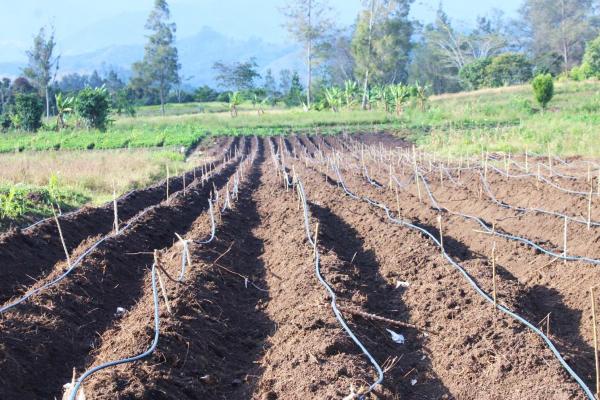Overview
This project aimed to sustainably increase the contribution of the sweetpotato crop to cash income and food security, via transformative improvements in selected sweetpotato value chains.
In areas with good transport infrastructure in the Papua New Guinea Highlands, smallholders are moving from subsistence farming to market-oriented production. Sweetpotato has a key role in this process and as a cash crop it provides food security amongst coffee, vegetables, and small livestock. Smallholders need continued support to make the move from subsistence farming to market-oriented sweetpotato production to meet market and customer needs. Constraints included low crop yields, infrastructure issues, and limited technical and business skills, demanding greater awareness of current and potential markets, and an understanding of what was needed for quality, consistency in supply, and ‘competitive’ pricing within these markets.
This project supported the expansion of market-oriented value chains through strengthened supply chains to high value markets, enterprise development along those supply chains, and improved crop production resulting from the supply of clean, high-performing planting material.
Expected project outcomes
- Commercially vibrant, sustainable market-oriented sweetpotato value chains.
- Increased capacity of value chains to meet gaps and needs of value chain players.
- Increased yields and returns due to increased availability of clean planting material and adoption of production management practices.
- Increased capacity at local and village level to build skills and competencies in sweetpotato marketing systems and supply chains.
- Enhanced capacity of communities to plan and execute production and sale of sweetpotato and associated crops and products.
- Greater returns on labour inputs and increased cash income.
- Increased food security, better health and improved financial access to education among rural communities.
- Use of increased sweetpotato production to support other enterprise developments and lifestyle changes.







